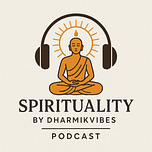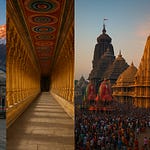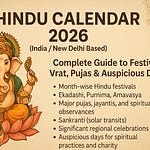Raksha Bandhan 2025 – An Auspicious Celebration
In 2025, the joyous Hindu festival of Raksha Bandhan will be celebrated on Saturday, August 9, with the full moon (Purnima Tithi) beginning at 2:12 PM on August 8 and ending at 1:24 PM on August 9.
The Raksha Bandhan thread-tying ceremony (muhurat) should be performed between 5:47 AM and 1:24 PM on August 9, as Bhadra Kaal, an inauspicious period in Hindu astrology, concludes before sunrise this year. This entire window is thus free from any astrological obstacles, making it highly suitable for rituals.
What Is Raksha Bandhan?
Derived from Sanskrit, the term “Raksha Bandhan” translates to “the bond of protection” (Raksha = protection, Bandhan = bond). It is celebrated every year on the full moon day of the Shravana month, symbolizing the deeply rooted emotional connection between siblings, especially a sister and her brother.
While popularly observed as a brother-sister celebration, the essence of Raksha Bandhan goes far beyond familial lines. It is a festival of trust, solidarity, goodwill, and the moral promise of standing by each other through life’s journey.
Mythological Origins: Stories That Shaped the Tradition
1. Krishna and Draupadī – The Sacred Promise
According to the Mahābhārata, Lord Krishna injured his finger while handling sugarcane. On seeing him bleed, Draupadī tore a piece from her sari and tied it around his finger. Moved by this spontaneous gesture of care, Krishna vowed to protect her in her hour of need.
This vow came true during the infamous episode when Draupadī was humiliated in the Kaurava court. As her sari was forcibly pulled, Krishna intervened by miraculously elongating her garment, preserving her dignity. This legend beautifully embodies the emotional and protective aspects of Raksha Bandhan.
2. Yama and Yamunā – Immortality through Love
The story of Yamunā and her brother Yama, the god of death, offers another profound connection. After years of separation, Yamunā invited Yama to visit. On arrival, she performed a sacred ritual and tied a Rakhi. Touched by her love, Yama granted her immortality and decreed that any brother receiving a Rakhi and pledging to protect his sister shall be blessed with long life and prosperity.
3. Indra and Śači – The Warrior’s Talisman
In a battle between devas (gods) and asuras (demons), Indra was on the verge of defeat. His wife Śači (also known as Indrani) tied a sacred talisman on his wrist, blessed with Vedic mantras. With renewed strength and divine protection, Indra went on to claim victory. This tale highlights how the tradition of tying a protective thread began with wives and priests - later evolving into a sibling-centric ritual.
4. Bhavishya Purāṇa – The Ritual of the Royals
The Bhavishya Purāṇa describes how a royal priest prepared a raksha packet containing rice, barley, mustard, and red ochre, and tied it to a king's wrist with a prayer. The protective power of this sacred thread was initially used in royal and priestly contexts, emphasizing the ritual’s spiritual significance before it became a family tradition.
Historical References: Rakhi in Real Politics
1. Rani Karnāvati and Emperor Humāyūn
In 16th-century India, Rani Karnāvati of Mewar, facing an invasion by Bahadur Shah of Gujarat, sent a Rakhi to Mughal Emperor Humāyūn, seeking protection. Honoring the Rakhi, Humāyūn marched with his army to defend her kingdom, albeit arriving too late. This story symbolizes how Raksha Bandhan transcended religion and politics, showcasing the universal value of duty and honor.
2. Roxana and King Porus
During Alexander the Great's invasion of India in 326 BCE, his wife Roxana is said to have sent a Rakhi to King Porus, pleading for her husband's safety. Porus, moved by the gesture, spared Alexander’s life in battle. This historical tale shows how even adversaries respected the sanctity of Rakhi.
The Importance of Bhadra Kaal – Avoiding Inauspicious Times
According to Vedic astrology, Bhadra is a celestial entity believed to obstruct auspicious ceremonies. The Bhadra Kaal is associated with conflict, disruption, and chaos. Mythologically, she is said to be the fiery daughter of Surya (Sun) and sister of Shani (Saturn).
Notably, it’s believed that Shurpanakha tied Rakhi to Ravana during Bhadra, bringing ruin to his empire. Hence, rituals like Raksha Bandhan, weddings, and yajnas are avoided during Bhadra Kaal.
In 2025, Bhadra ends before dawn on August 9, making the time between 5:47 AM and 1:24 PM astrologically favorable for the thread-tying ritual.
🌈 Rituals and Traditions: Step-by-Step Celebration
Preparations
Markets are adorned with Rakhis of all shapes and styles - silken threads, zari work, beads, cartoon-themed Rakhis for children, and even biodegradable eco-Rakhis. Sweets, gift boxes, and decorative items sell in abundance.
Puja Thali
A typical puja thali includes:
A diya (lamp)
Roli (kumkum or turmeric paste)
Akshat (uncooked rice)
Rakhi thread(s)
Sweets like laddoos, barfi, or soan papdi
The Ceremony
Tilak – The sister applies roli on the brother’s forehead.
Aarti – A prayer is sung as she waves the diya in front of him.
Tying the Rakhi – She ties the Rakhi on his right wrist while chanting blessings for health, success, and safety.
Offering Sweets – Both feed each other sweets, reinforcing the bond of affection.
Gift Exchange – The brother gives a token of appreciation or a gift, promising his protection.
Family Bonding and Feast
After the ritual, the family gathers for a grand festive meal. Popular dishes include:
Poori & Aloo Sabzi
Kheer or Seviyan
Gulab Jamun & Laddoo
Paneer or Kofta Curries
The meal reinforces familial love and togetherness.
Regional Variations: Raksha Bandhan Across India
Rajasthan – Lumba Rakhi
Sisters also tie a Lumba Rakhi to their sister-in-law’s bangles, symbolizing harmony in the marital household.
Maharashtra & Goa – Narali Purnima
Coinciding with Raksha Bandhan, fisherfolk offer coconuts to Lord Varuna seeking protection from storms during monsoon.
Bengal & Odisha – Jhulan Purnima
Linked to Krishna and Radha, this version includes swinging the idols of the deities on elaborately decorated swings, along with Rakhi tying.
Gujarat – Pavitropana
Devotees tie sacred threads on themselves after worshipping Lord Shiva with bilva leaves and water.
🎵 Punjab – Kajari Purnima
Often celebrated with folk songs and dances, Raksha Bandhan here blends with harvest-related observances.
Raksha Bandhan Beyond Borders
Across Nepal, Mauritius, the USA, UK, Canada, and the Middle East, Indian communities observe Raksha Bandhan with as much enthusiasm as in India. Sisters send Rakhis through post or e-commerce platforms, and video calls bridge geographical gaps.
In some schools and communities, Rakhis are tied on trees or animals, encouraging compassion and environmental awareness.
Evolution of the Festival: Tradition in a Modern Age
From Priesthood to Siblings
Earlier, Raksha Bandhan was not limited to siblings. The Bhavishya Purāṇa shows priests tying Raksha Sutras to patrons. Over time, with migration, urbanization, and popular cinema, the sibling-centered narrative took root, especially in northern India.
Influence of Media & Popular Culture
Radio and Doordarshan popularized Raksha Bandhan in the 20th century.
Bollywood reinforced emotional sibling bonds through iconic songs like “Phoolon Ka Taron Ka” and “Bhaiya Mere Rakhi Ke Bandhan Ko Nibhana.”
E-commerce has transformed Rakhi shopping with personalized Rakhis, combo gifts, and same-day delivery.
Voluntary Kinship and National Integration
Rakhis are tied on soldiers, doctors, and police officers.
Children tie Rakhis to trees as a vow to protect nature.
Rakhi is also used by social and cultural groups (e.g., RSS) to foster unity across communities.
Psychological & Social Significance
For Sisters: It affirms that their voice, presence, and welfare matter.
For Brothers: It instills responsibility, empathy, and moral duty.
For Families: It creates shared rituals that reinforce emotional security.
For Society: It celebrates trust and voluntary relationships, necessary for societal harmony.
Why Raksha Bandhan Still Matters
Celebrates relationships beyond formality
Promotes values of duty, affection, and accountability
Unites people of all backgrounds under a common emotion
Connects spiritual symbolism with human psychology
Inspires respect for protection - of people, nature, and values
How to Celebrate Raksha Bandhan 2025 Meaningfully
✅ Tie an eco-friendly Rakhi
✅ Share stories behind the tradition with children
✅ Donate to causes supporting women and children
✅ Host a family meal or reunion
✅ Tie Rakhis to neighbors, colleagues, or community helpers
✅ Celebrate online if you’re away from your sibling
✅ Reflect on your duties and promises as a sibling or friend
A Thread Beyond Time
Raksha Bandhan is more than a Hindu ritual -it’s a cultural treasure that celebrates what it means to care, to promise, and to protect. Whether you tie a thread on your sibling, a soldier, a friend, or a tree -you are making a vow. A vow of kindness, solidarity, remembrance, and unity.
Let Raksha Bandhan 2025 be your moment to reconnect—with tradition, with loved ones, and with your inner sense of duty.
🙏 Happy Raksha Bandhan 2025
May every Rakhi carry with it the strength of love and the promise of protection.











